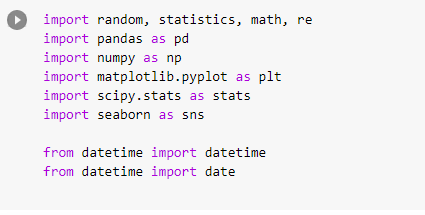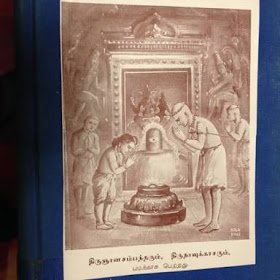Indra assumes the form of a Brahmin and goes to Prahlada and serves him as a disciple, with the desire to learn from him the secret of his success. 2/n
Prahlada the Asura was then emperor of all the three worlds, conquered by the power of his integrity.
As it always happens, Indra becomes jealous of Prahlada’s power and feels shaky – there is the threat of losing his throne to someone like the mighty Asura. 1/n
Indra assumes the form of a Brahmin and goes to Prahlada and serves him as a disciple, with the desire to learn from him the secret of his success. 2/n
But when Prahlada insists, he asks: “If you are pleased with me, Emperor, please give me your character, your integrity.” 4/n
Indra accepts the boon and goes away.
Soon Prahlada sees a dazzlingly lustrous being emerging from his body and leaving him. 5/n
Sheela adds, “in the Brahmin to whom you have given me away.” 6/n
Asked who he is, the being introduces himself as Dharma: virtue and righteousness.
After Dharma too leaves him, telling him he is going to join Integrity to live in the body of the Brahmin since he, 7/n
Prahlada then finds another effulgent being emerging from him, this time Satya, Truth, and then another, Vritta, Uprightness, and then yet another Bala, Strength, all leaving him one by one to live in the Brahmin, following Integrity. 8/n
More from Rajan Venkateswaran (സ്വാമി)
More from All
You May Also Like
Nano Course On Python For Trading
==========================
Module 1
Python makes it very easy to analyze and visualize time series data when you’re a beginner. It's easier when you don't have to install python on your PC (that's why it's a nano course, you'll learn python...
... on the go). You will not be required to install python in your PC but you will be using an amazing python editor, Google Colab Visit https://t.co/EZt0agsdlV
This course is for anyone out there who is confused, frustrated, and just wants this python/finance thing to work!
In Module 1 of this Nano course, we will learn about :
# Using Google Colab
# Importing libraries
# Making a Random Time Series of Black Field Research Stock (fictional)
# Using Google Colab
Intro link is here on YT: https://t.co/MqMSDBaQri
Create a new Notebook at https://t.co/EZt0agsdlV and name it AnythingOfYourChoice.ipynb
You got your notebook ready and now the game is on!
You can add code in these cells and add as many cells as you want
# Importing Libraries
Imports are pretty standard, with a few exceptions.
For the most part, you can import your libraries by running the import.
Type this in the first cell you see. You need not worry about what each of these does, we will understand it later.

==========================
Module 1
Python makes it very easy to analyze and visualize time series data when you’re a beginner. It's easier when you don't have to install python on your PC (that's why it's a nano course, you'll learn python...
... on the go). You will not be required to install python in your PC but you will be using an amazing python editor, Google Colab Visit https://t.co/EZt0agsdlV
This course is for anyone out there who is confused, frustrated, and just wants this python/finance thing to work!
In Module 1 of this Nano course, we will learn about :
# Using Google Colab
# Importing libraries
# Making a Random Time Series of Black Field Research Stock (fictional)
# Using Google Colab
Intro link is here on YT: https://t.co/MqMSDBaQri
Create a new Notebook at https://t.co/EZt0agsdlV and name it AnythingOfYourChoice.ipynb
You got your notebook ready and now the game is on!
You can add code in these cells and add as many cells as you want
# Importing Libraries
Imports are pretty standard, with a few exceptions.
For the most part, you can import your libraries by running the import.
Type this in the first cell you see. You need not worry about what each of these does, we will understand it later.
























